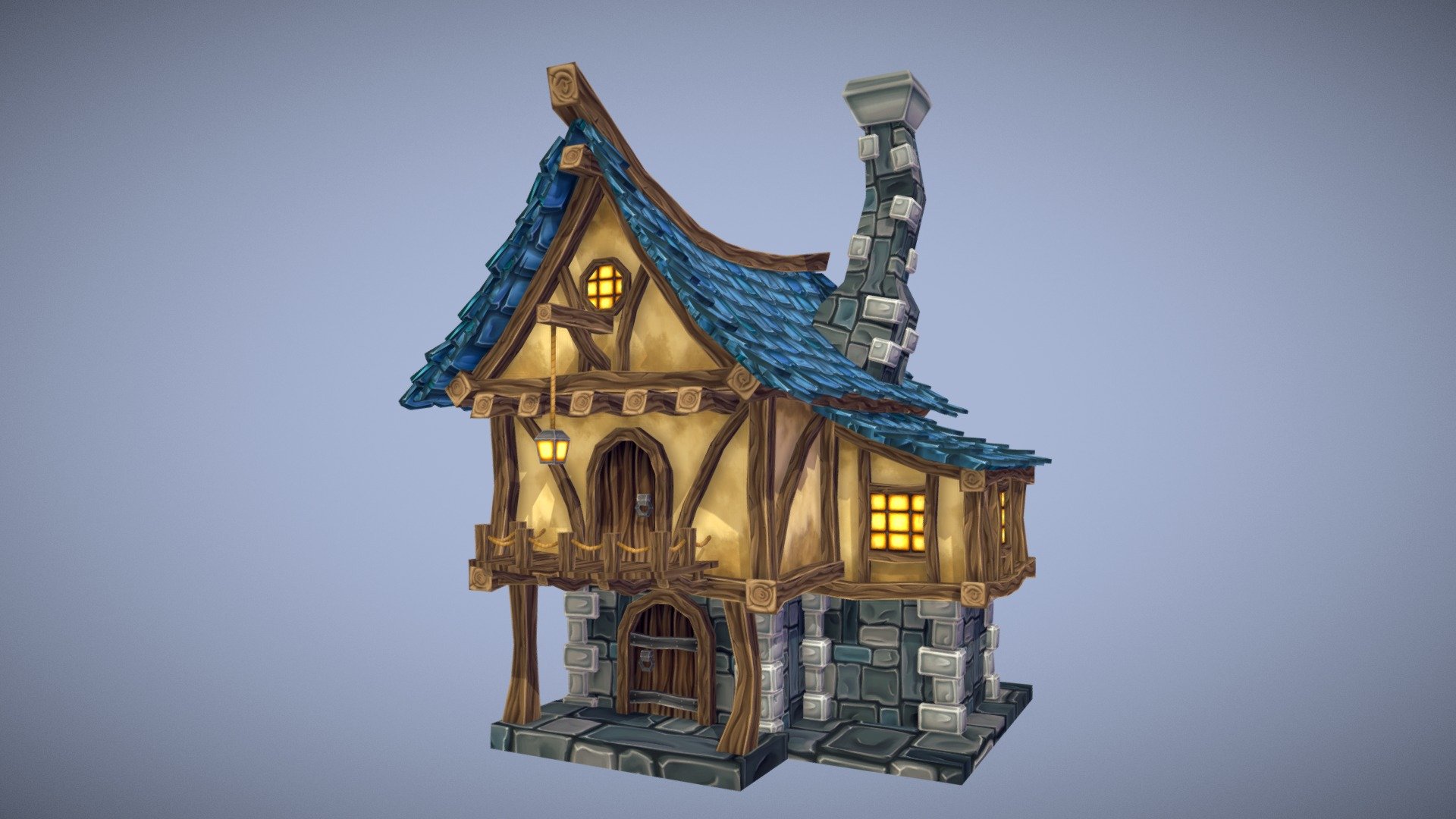Table Of Content

Horizontal wooden planks are visible where the mortar infill has disappeared. One of the most common questions about daily life in the Middle Ages is what did homes look like. Medieval manuscript illuminations can reveal much about the exteriors and interiors of a peasant’s house. Which meant that peasants could expand their holdings if they could repair them and use the arable fields for grazing animals. Meat, wool, Rhodes, and bones were frequently more valuable than grain – in particular because of the new demands of medieval town-dwellers. Stone houses, primarily seen in the higher echelons of society or regions abundant in stone, were constructed using the dry-stacking method or with mortar.
Wattle and Daub: The Ingenious Building Technique That Shaped Medieval Peasant Homes
Explore the gothic, medieval-style Fonthill Castle in the heart of Bucks County - WPVI-TV
Explore the gothic, medieval-style Fonthill Castle in the heart of Bucks County.
Posted: Sat, 16 Sep 2023 07:00:00 GMT [source]
Rounded arches were designed to frame doors and windows creating impressive features on castles and churches. The three occupants are warming themselves before the fireplace; smoke emerges from a small chimney. The room is dark and fitted with few windows; nevertheless, the sturdy frame construction at ground level, the walls, and the roof trussing are visible. However, brick was very expensive so many chose to make the half-timbered houses that are now commonly referred to as Tudor houses.
What are the main elements of medieval architecture?
Stone is able to withstand any sort of climate and provided with perfect insulation against the elements as well as enemy bombardment. In addition to that stone buildings were able to build much higher and to support much heavier superstructures. The rigidity of the material also made true modular design possible that, in many cases needed no “filling” material since the sheer weight of the material was enough to ensure its stability. Both these methods, if used properly, provide a long-lasting weathertight roof with a lifespan of around 80–100 years.
Learn the latest from the Middle Ages
Part of the furnishings would be removed for a wooden table to be assembled on trestles for mealtimes. The rise of Medieval Gothic architecture began in the latter half of the 12th century, characterized by pointed arches, gargoyles, and other decorative embellishments on buildings. This was dismissed by Renaissance scholars who called it Gothic, a slanderous term meaning barbarous. According to these critics, this style abandoned proportion and classic lines of architecture. Other useful furnishings include the barrel chair, a hand grill, shears, bellows and a storage cabinet. Again the walls are stone, coated with plaster, and the ceiling, wooden planks supported by large beams.
The most widespread method of construction in Europe was the so-called post-and-lintel. Vertical wooden beams would support a transversal one, by way of tailored fitting with each other. Medieval builders crafted intricate elbows and angles to ensure that structurally important beams remained sound, seldom needing nails to keep them together. A notable difference between houses in towns and villages was the absence of tofts and crofts. These were enclosures on the front and back of the house, mostly used to keep animals and minor cultivation, respectively. Urban longhouses were originally separated from each other on the sides, as was the case in rural villages.
Castles By Country
Enter Your Medieval Era by Visiting These Six Castles in New Hampshire & Massachusetts - wokq.com
Enter Your Medieval Era by Visiting These Six Castles in New Hampshire & Massachusetts.
Posted: Mon, 01 Apr 2024 07:00:00 GMT [source]
Iron rods and are also used for added structural integrity in many military and religious buildings. Located in the Dordogne region of southern France, the Château des Milandes was built by François de Caumont around the year 1489 and served as the home of the Lords of Caumont. Château du Plessis-Josso oversaw a manor of 1,500 hectares, encompassing several parishes and some 500 residents. It was, therefore, an important judicial, administrative and economic centre. It features a crenellated wall enclosure that was primarily constructed to fend off the raiding parties which were a feature of the Hundred Years War, and the earlier 14th century Breton War of Succession. The great hall or salle basse was situated on the ground floor and used for receiving commoners, while an upper hall or haute basse was used for receiving noble guests.

The entrance of a Medieval house could be on the second floor, by an external stair, or on the ground floor, by a few steps with a wooden porch, highly ornamented and painted. While optimized for functionality, medieval townhouses evidently also had comfort in mind. Whether it was concerning a hearty meal’s preparation or ensuring a good night’s sleep, the townhouse model provided. The bed frame itself would have been ornately carved and painted, and the mattress would hang on ropes.
The Basic Building Blocks: Materials in Use
His control over his realm equaled the power held by the Roman emperors of old. The Frankish Empire was such a well-functioning unit that Charlemagne could afford to live in generally unprotected villas, a spectacular indicator of how relatively peaceful the situation within the empire was. Starting in 711, muslim forces of varying ethnic backgrounds crossed from North Africa into modern-day Spain, obliterating the existing Visigothic kingdom. The Islamic conquerors brought with them a large and diverse Arabic and North African diaspora. Our website, podcast and Youtube page offers news and resources about the Middle Ages.
The peasant’s medieval house stood in stark contrast to that of the nobility. These humble abodes were often single-roomed structures, where families lived, worked, and slept in a shared space. A central hearth provided warmth, while a simple hole in the roof acted as a chimney. Merchants and craftsmen, thriving in the bustling medieval towns, resided in timber-framed houses. These structures often had a shop or workspace on the ground floor, with living quarters above.
The construction was completed in 1289 under the supervision of Master James of St. George, a master mason, architect, and engineer. Colchester Castle, located in Essex, is the ultimate example of a Norman castle. Construction began around 1070 on the ruins of the Temple of Claudius, commissioned by William the Conqueror. This original building was a single-story construction, the look Colchester takes today is thanks to an expansion around 1101.
The nobility and wealthy landowners lived in grand manor houses, while peasants and serfs lived in simple cottages. Wattle and daub may not be a raw material but its modular nature and comparatively easy construction made it an excellent construction material. It is more sturdy than straw and provides better insulation from the elements. As with straw houses wattle and daub houses also made use of a timber frame and used Thatched roofs.
In some northern regions the roofs in order to keep the humidity and water out would have been build by applying a layer of soil under a layer of turf on the roof of the house. Houses and other buildings made that way would almost blend with the rest of the scenery making them very hard to notice from distance. Bridges, Cathedrals, Castles and Manors all used masonry as their main structural component. Of course all of those buildings also made extensive use of lumber but, in most of them, even the frame was made of stone.
Kerjean was also built on the northern French coast of Brittany, by members of the Barbier family from the 1540s until its completion in the 1590s. The manor house is a very grand stone structure, built around a central courtyard. This 14th century fortified manor house is built of stone and features a moat surrounding the structure. The house itself consists of a single L-shaped block, with an undercroft built underneath the great hall which was reached by a stone staircase. Although they were not nearly as strong as castles, some manor houses were fortified. Since they formed the heart of a manor or fief, the manor house was an obvious target for any raiding force or invading army.
The origins of medieval houses are rooted in the social and economic conditions of the time. The houses were not just places to live but also symbols of power, wealth, and social status. The architecture and design of these houses offer valuable insights into the medieval way of life and the cultural heritage of the time. In the medieval times, a house was more than just a shelter; it was a statement.
Large fiefs would be able to support a lord and his family year-round, but a smaller manor would not be able to produce enough food to do so. In these cases, lords usually held several smaller fiefs and travelled between them throughout the year, holding courts as they went. Kings and great nobles granted land to more minor lords in return for military service. Manors or ‘fiefs’ as they were also known, represented the low end of feudalism, where peasants would owe goods or services to their lord in return for land. The half-timbered house of the Middle Ages had the timber painted in black, with the walls in lighter colors, resulting in a very picturesque effect. In France, Dinan and Strasbourg are representative, as it is Rothenburg am der Tauber in Germany.
Manor house, during the European Middle Ages, the dwelling of the lord of the manor or his residential bailiff and administrative centre of the feudal estate. The medieval manor was generally fortified in proportion to the degree of peaceful settlement of the country or region in which it was located. The manor house was the centre of secular village life, and its great hall was the scene of the manorial court and the place of assembly of the tenantry.

No comments:
Post a Comment